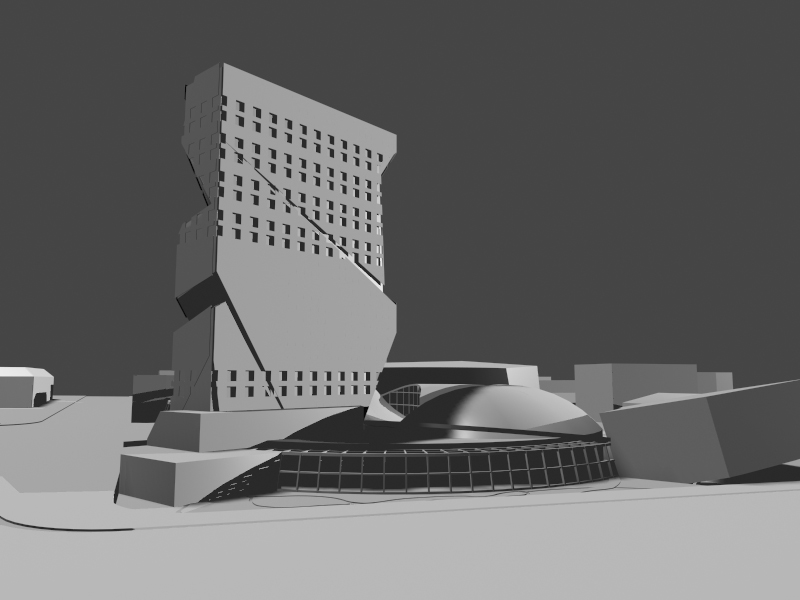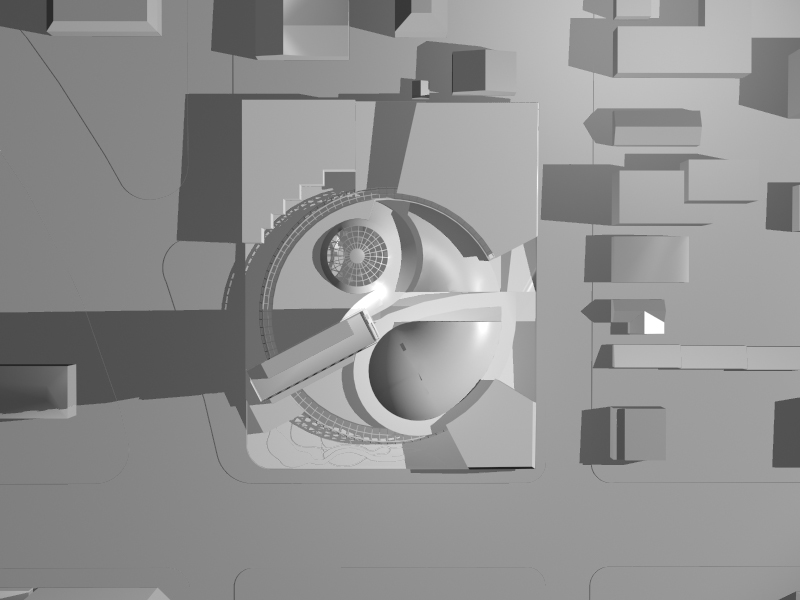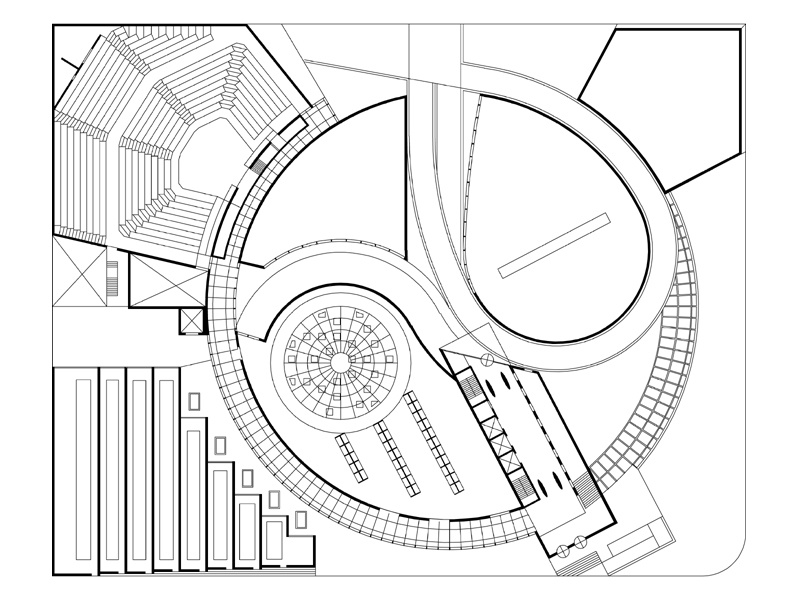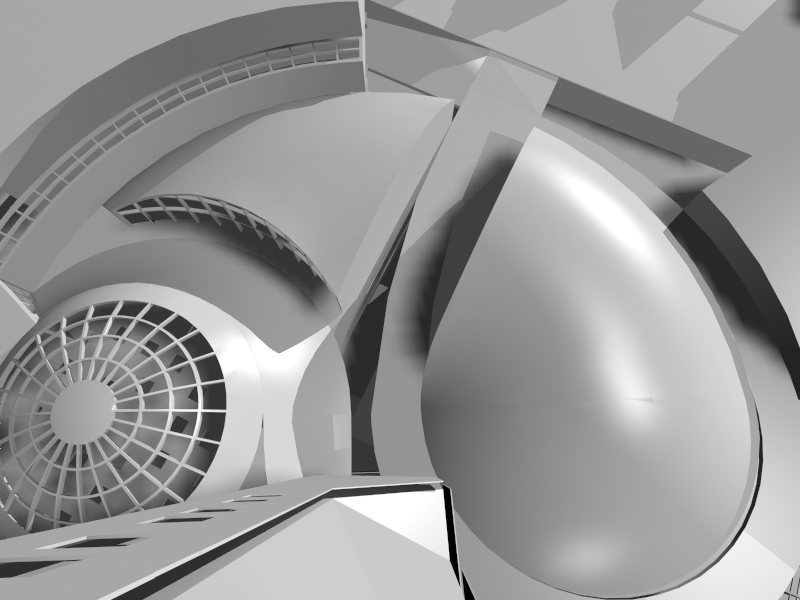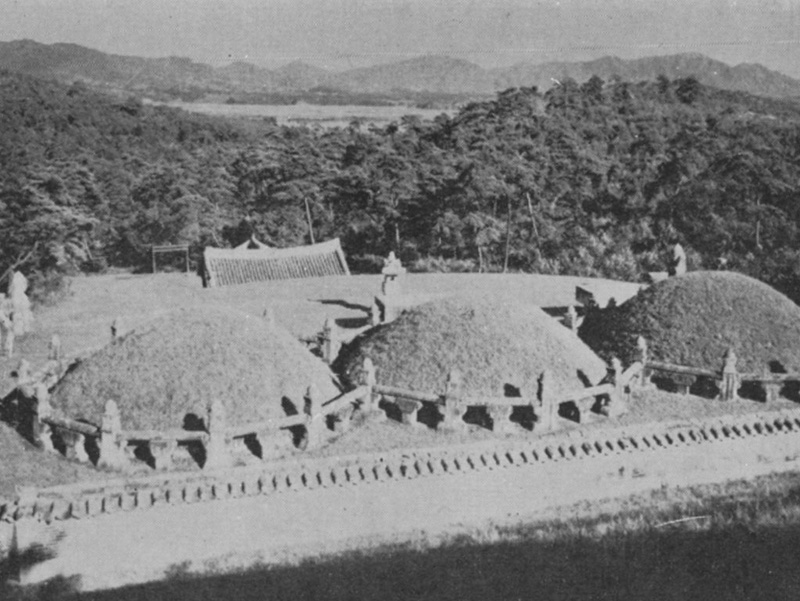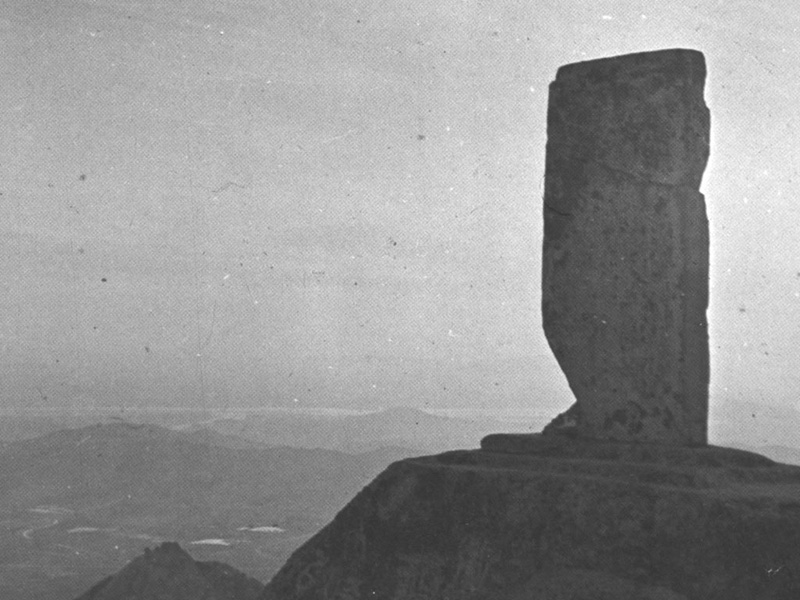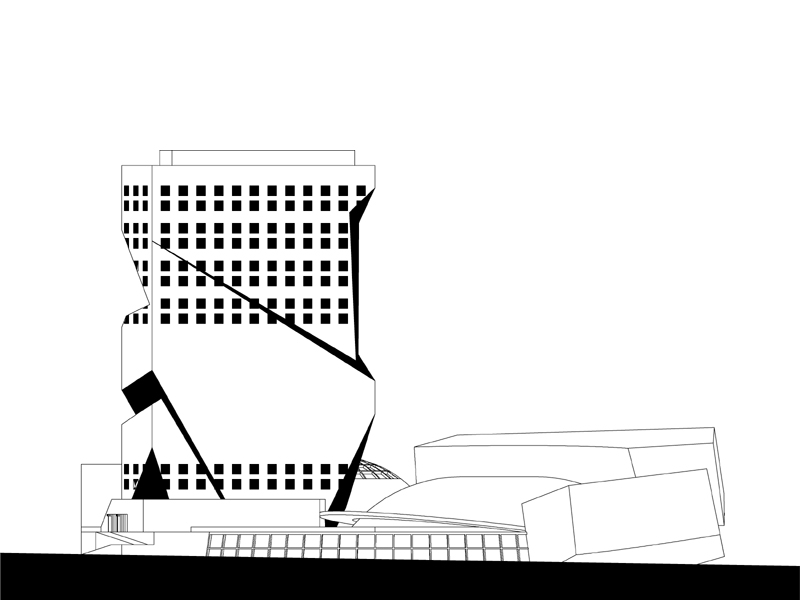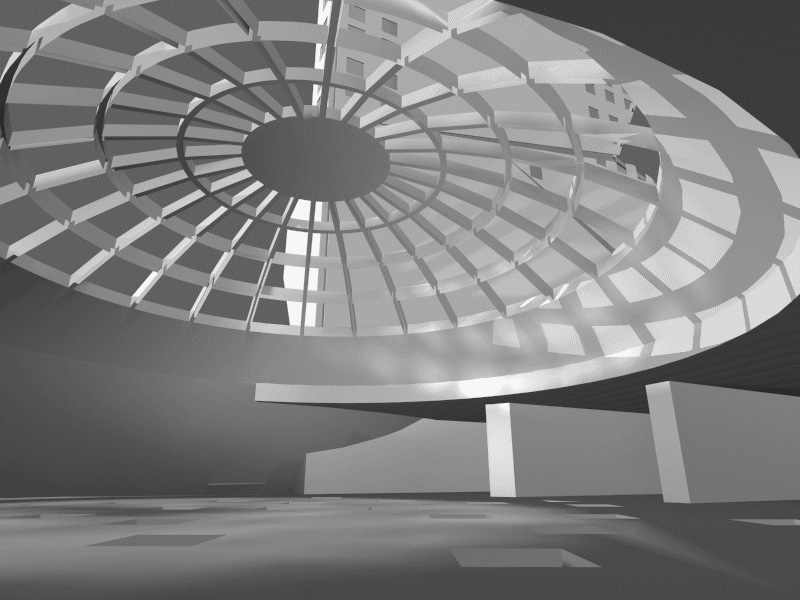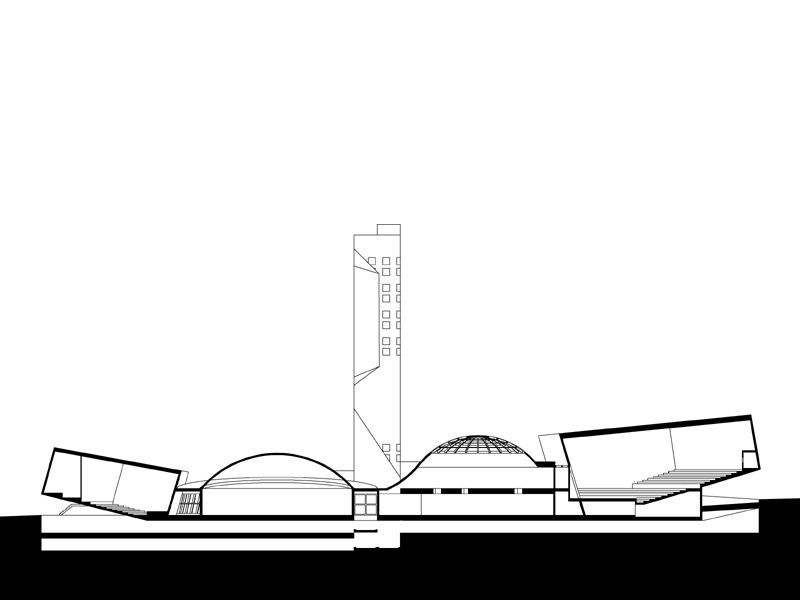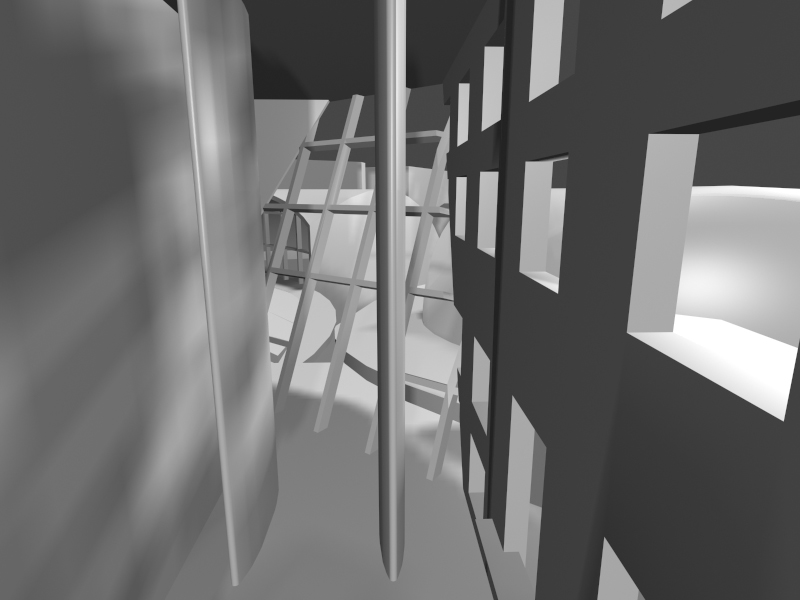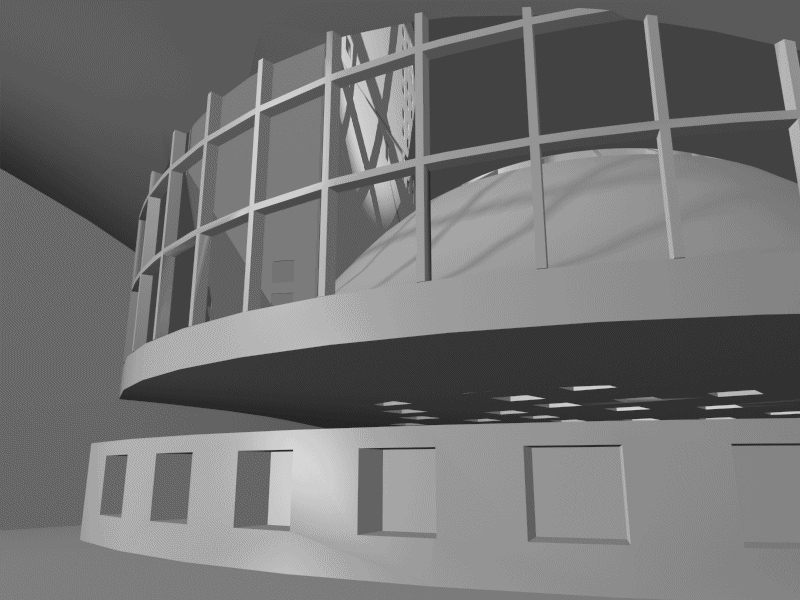Korean Cultural Center
| The museum layout, geometry and imagery is thematically quoted from a number of sources. In the context of the local internalized block structure, the lobby is a hub around which museum events are focused.The culture of Korea is represented by its national symbol, the Taeguk, manifested in the site plan. Its integration into LA ever present shifting tectonic plates occurs through a fracturing of the flag symbol, or a slot that penetrates the circulation ring and stops at the base of the tower. The tower, which houses the library and administrative offices, makes reference to the Pukhansan hunting monument from the Silla period overlooking Seoul.The permanent gallery stretches across the site beginning under a half dome. This image refers to the traditional burial sites from which some of the artifact came.An interpretation of the Taeguk offers translation of parts of the program. The circulation extension of the lobby circumscribing the campus of buildings stands for unity. The two opposing pairs can be read as the transmission of knowledge (lecture hall) and the acquisition of knowledge (artists studios). The performance hall for the communal appreciation of traditional performance arts diagonally opposing the garden, for personal reflection modeled on principals found at the Po-suk-joung Arbor. |
© Standing Architecture
